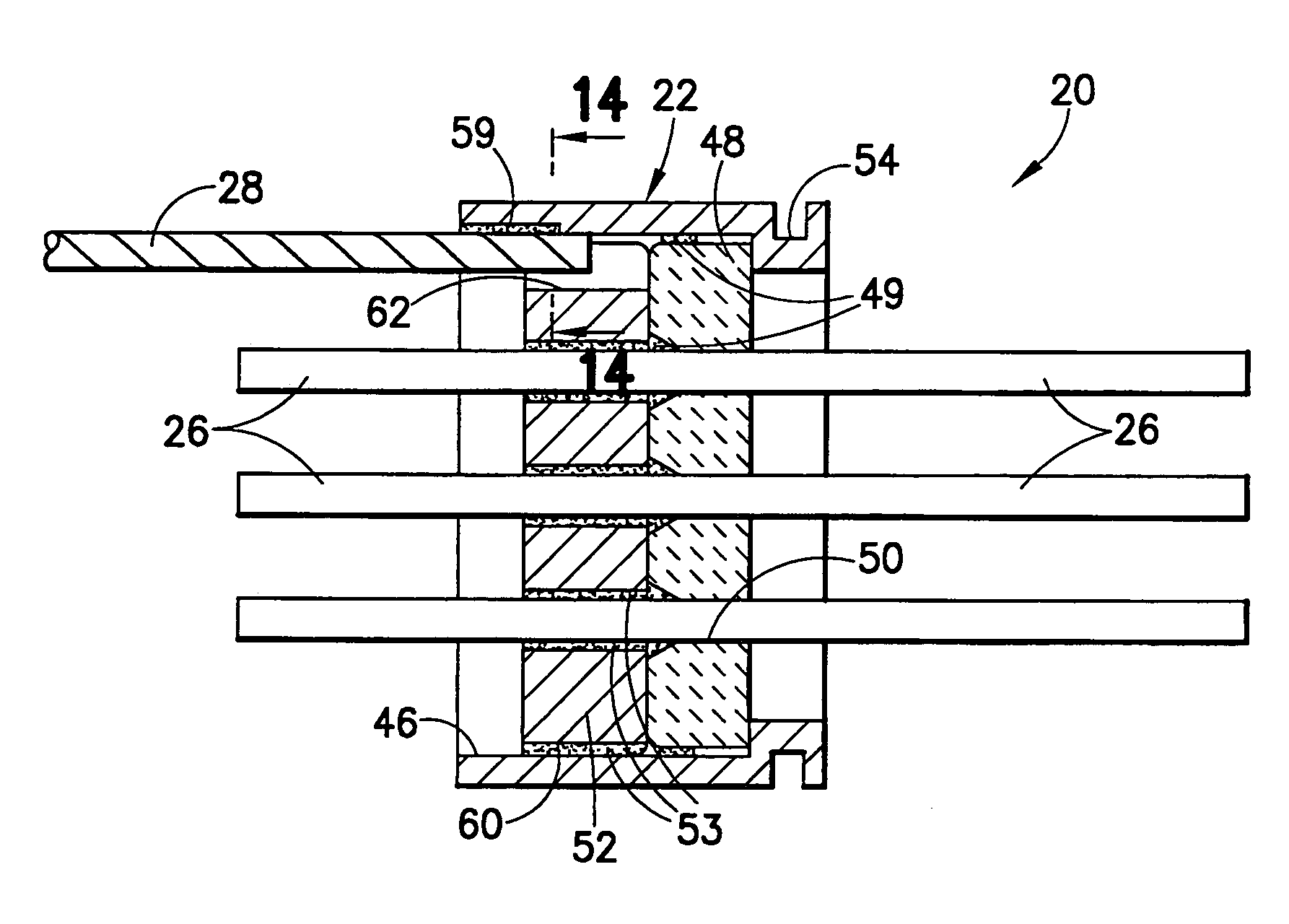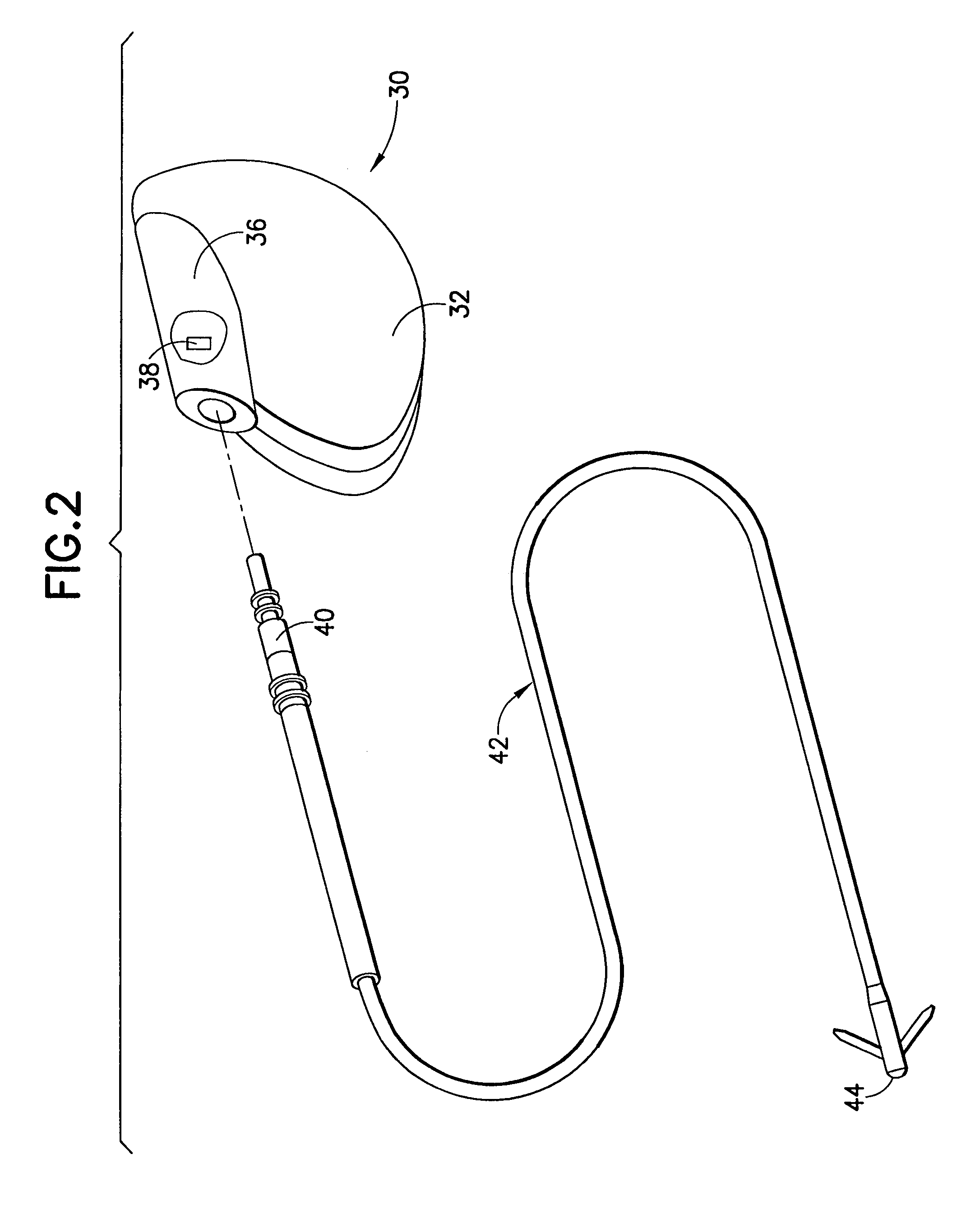Internally grounded filtering feedthrough
- Summary
- Abstract
- Description
- Claims
- Application Information
AI Technical Summary
Benefits of technology
Problems solved by technology
Method used
Image
Examples
Embodiment Construction
[0041]Referring to FIG. 1, there is shown a perspective view of a feedthrough device 20 incorporating features of the present invention. Although the present invention will be described with reference to the embodiments shown in the drawings, it should be understood that the present invention can be embodied in many alternate forms or embodiments. In addition, any suitable size, shape or type of elements or materials compatible with the invention may be used. The feedthrough device 20 includes a conductive ferrule 22 having an outer peripheral surface 24 defining its outermost boundary. A plurality of lead wires 26 extend through the ferrule 22 but are electrically isolated from the ferrule. A ground wire 28 is coupled to the ferrule and is attached to the feedthrough device within its outermost boundary as defined by the outer peripheral surface 24.
[0042]Viewing FIGS. 2–6, the feedthrough device 20 is seen to be a component of a medical implant device 30 for stimulating tissue of a...
PUM
 Login to View More
Login to View More Abstract
Description
Claims
Application Information
 Login to View More
Login to View More - R&D
- Intellectual Property
- Life Sciences
- Materials
- Tech Scout
- Unparalleled Data Quality
- Higher Quality Content
- 60% Fewer Hallucinations
Browse by: Latest US Patents, China's latest patents, Technical Efficacy Thesaurus, Application Domain, Technology Topic, Popular Technical Reports.
© 2025 PatSnap. All rights reserved.Legal|Privacy policy|Modern Slavery Act Transparency Statement|Sitemap|About US| Contact US: help@patsnap.com



